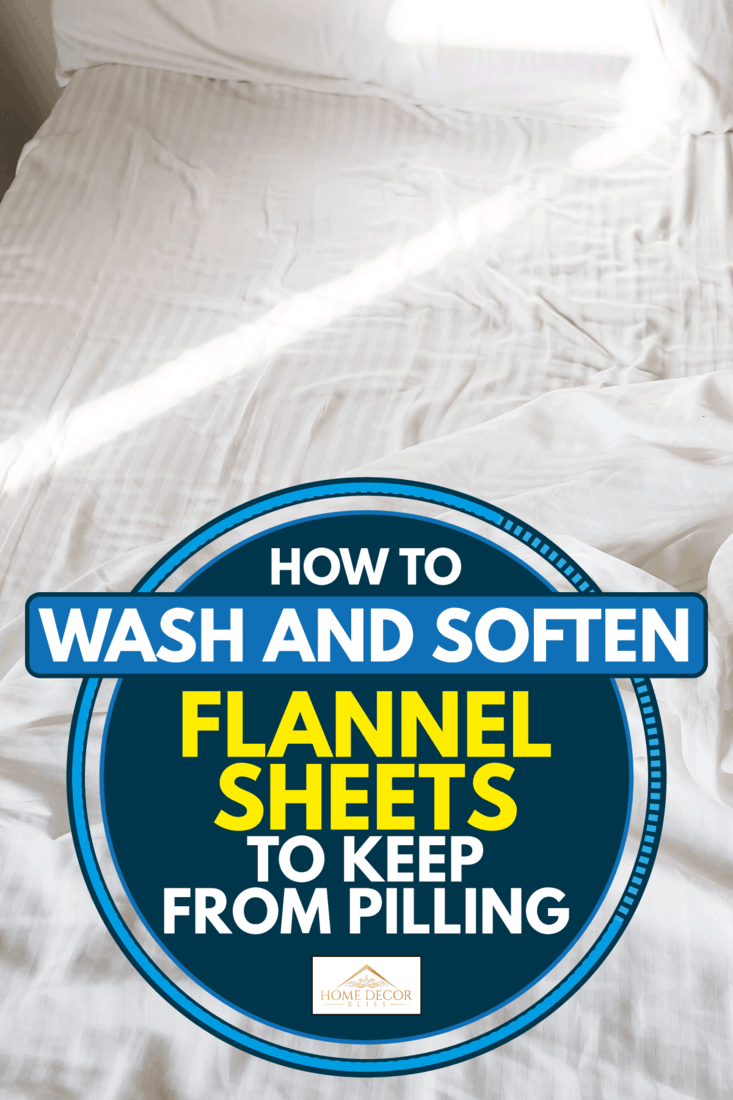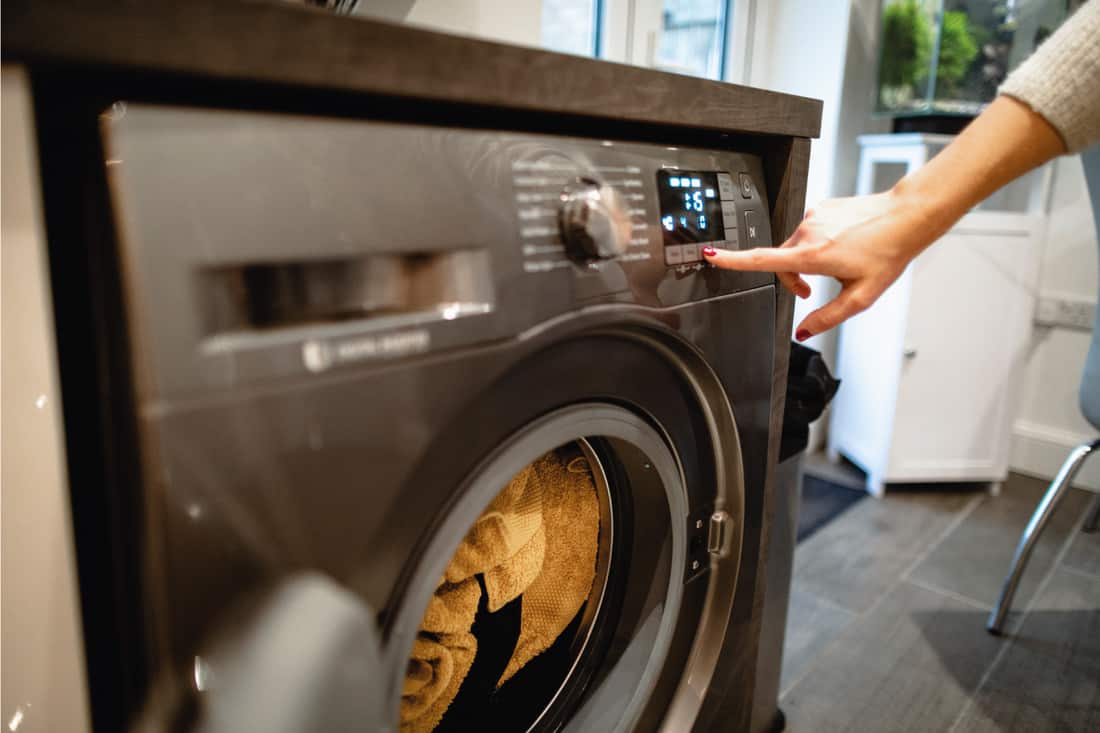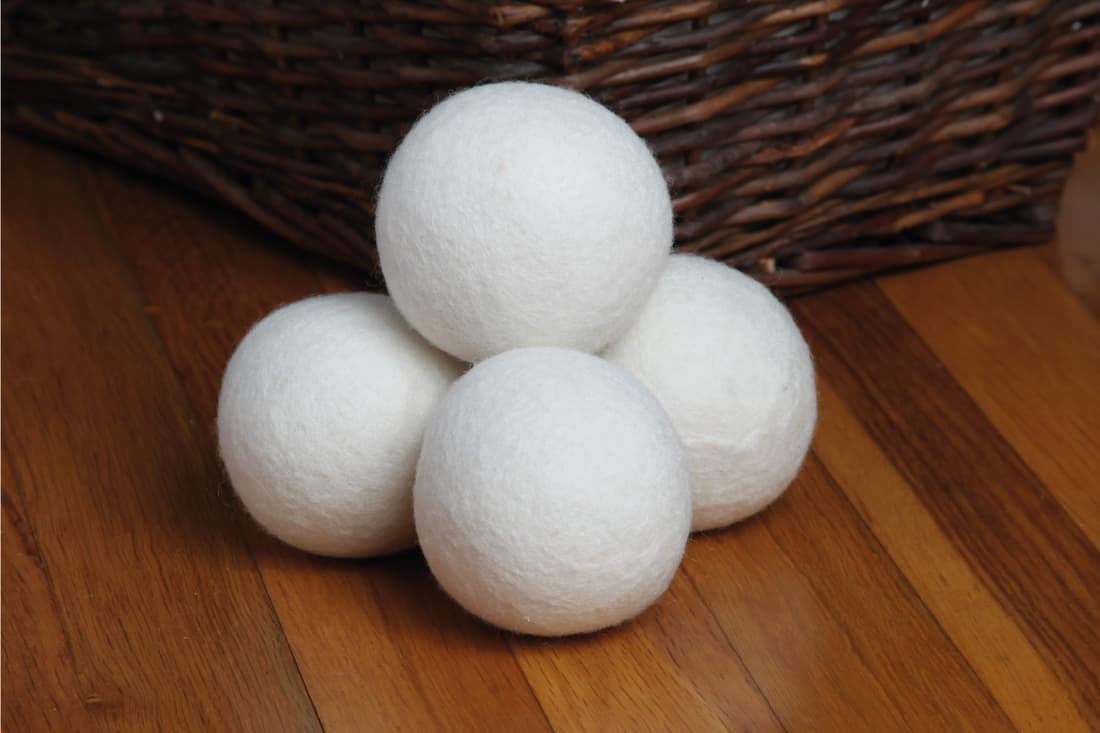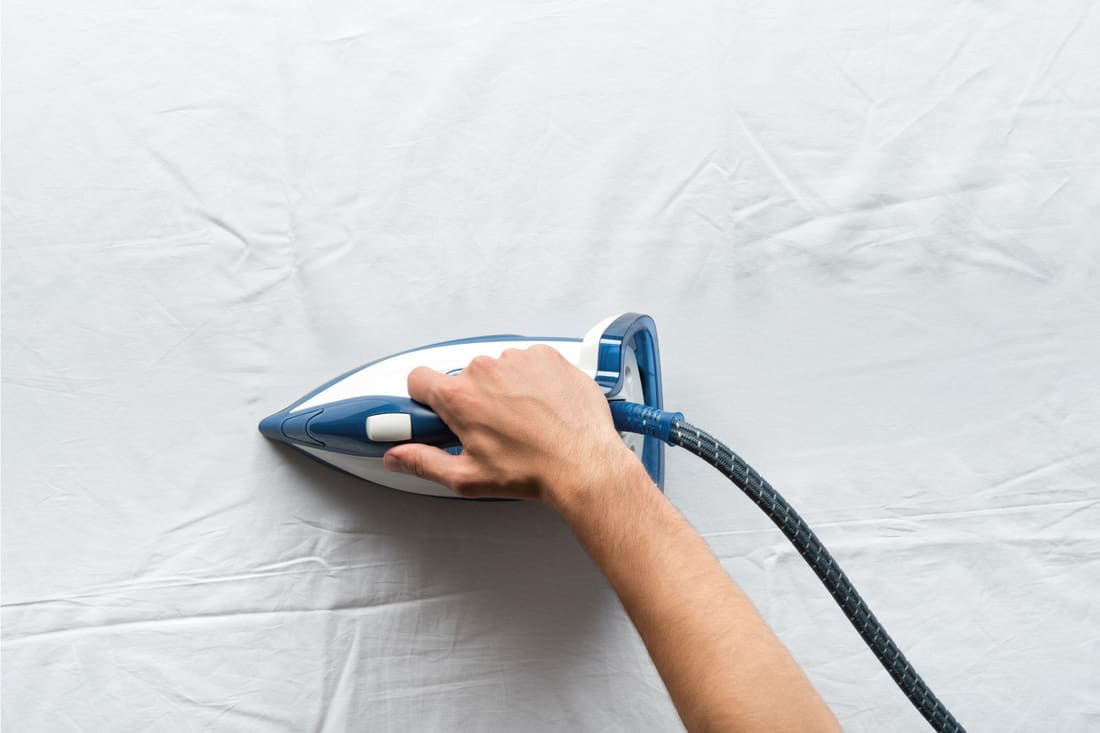There are so many reasons to switch to flannel sheets: they're incredibly soft, breathable, and durable. But the obvious setback is how easily they pill. Not to worry – we did the research and found the best methods for preventing your flannel sheets from pilling and removing pills when they do inevitably pop up.
Pills form on flannel sheets primarily due to friction and heat. To prevent pilling, you'll need to wash your sheets on a delicate setting and only use cold or warm water.
We know it seems difficult to maintain your flannel sheets, but once you know the basics it really is a piece of cake. Keep reading to learn everything there is to know about extending the lifespan of your favorite set of sheets.

The Initial Wash
Like all other bedding, it's important to wash your flannel sheets upon purchase before their first use. This will remove sizing agents and other chemicals that may remain in the fabric from the factory. To set yourself up for success, it's important to treat your flannel sheets a little differently from your other bedding.
We sometimes add affiliate links and content that was curated and created by our team with the help of advanced ai tools to help showcase the best design styles.

Instead of detergent, add 1/2 cup white vinegar to the load the first time you wash your flannel sheets. This trick "sets" the fibers so they are less likely to pill and the colors are less likely to bleed.
Check out this distilled white vinegar on Amazon.
Machine Cycle
Excess agitation is the enemy of flannel materials. For this reason, it's best to always wash your flannel sheets on a gentle setting – the less they rub up against each other, the less likely they are to pill.

Likewise, you should always wash your flannel sheets separately from your other laundry. More stuff in the washing machine means more agitation, and the cycle repeats (no pun intended).
Water Temperature
The other rule of thumb to keep your flannel sheets in their best condition is to avoid hot water. Cool or cold water is best, but warm works fine as well. Just avoid the hottest setting to preserve the quality of your sheets.
To learn more about how to care for your bedding, check out this article: How Long Do Flannel Sheets Last?
Softeners And Additives
Although it seems counterintuitive, fabric softeners will actually stiffen the feel of your flannel sheets over time. Too much product of any kind will leave a buildup of residue and promote pilling in the long run.
When it comes to flannel sheets, keep it simple. This is why vinegar is such a popular option for the first wash cycle. After that, a small amount of gentle detergent will do the trick.
Check out this unscented detergent on Amazon.
How To Keep Flannel Sheets From Pilling
What is pilling anyway? The phenomenon is caused by fibers that roll up and create little balls of lint or fuzz on the surfaces of fabrics. You may think this is an inevitable part of owning flannel sheets, but there are steps you can take to lessen the effect of pilling in your favorite garments and bedding. Even if your sheets have already pilled, we've researched ways that will bring them back to life.
This is most common in delicate, soft fabrics, which is why your favorite comfy sheets and sweaters are often the most prone to pilling. Bad news, we know, but there's no need to fret – comfort should never be sacrificed in the name of longevity. Keep reading to learn our favorite methods that will make your flannel sheets nearly pill-proof.
Prevent Pilling Over Time
Like we've said, the easiest way to prevent pilling is to avoid heat and friction. Although the vinegar trick is only necessary for their first wash, your flannel sheets will benefit from careful washing each and every time they need to be cleaned. Stick to a gentle cycle, cool to warm water, and a small amount of gentle detergent each time you throw them in the wash.
Every once in a while you should remove excess fuzz with a lint roller before washing. This will reduce the amount of loose fibers on the surface of your sheets that would otherwise wind up pilling throughout the washing and drying process.
Spot Clean With Care
Because abrasion is the main cause of flannel materials pilling, it's not advisable to try and scrub stains out of your flannel sheets. Rather, try a blotting motion when the stain is still fresh. On laundry day, you can also apply a little extra detergent to the affected area and then wash as normal.
Buy High Quality Sheets
The best way to prevent pilling is to start at the source. Purchasing high quality sheets is the simplest way to ensure they stand the test of time. Splurging a little up front will ensure they are all-around cozier, more breathable, and more durable in the long run.
Although the indicator of quality for most sheets is thread count, flannel sheets work a little differently – they are described by weight. The weight your sheets are listed as refers to the weight of one square yard of fabric. For example, if you buy 3 oz (or 85 gram) flannel sheets, each square yard is going to be 3 ounces.
The heavier your sheets are, the warmer they're going to be – but you will sacrifice a bit of breathability. Consider your sleeping habits and preferred bedroom temperature when making your purchase. We think 5 oz flannel sheets are a great place to start – they are warm and cozy without being too heavy.
Check out this 160-gram flannel sheet set on Amazon.
Can You Put Flannel Sheets In The Dryer?
Remember the basic tenet of flannel care: minimal heat, minimal agitation. Therefore, air drying your flannel sheets is the way to go. We know it takes a little bit longer, but it's worth it for the results.
But, If You Really Need To Dry Your Flannel Sheets...
It's acceptable only under certain conditions. First, always use your dryer's gentlest, coolest setting – on most dryers "air dry" or "tumble dry" is your best option.

It's also a good idea to throw some clean tennis balls or dryer balls in with your flannel sheets. This trick will aerate your sheets and keep them from bunching up and rubbing against each other too much.
Check out this 6-pack of wool dryer balls on Amazon.
Does Flannel Shrink In The Dryer?
Yes, flannel is prone to shrinkage, especially when exposed to heat (yet another reason to avoid hot air and water). To keep your sheets from shrinking too much, remember to wash in cool water and air dry.
To learn more about the dos and don'ts of drying your bedsheets, check out this article: How Long Do Bedsheets Take To Dry?
How Do You Remove Fuzz From Flannel?
A light layer of fuzz or lint can easily be removed with a sticky lint roller. Repeating this often will lessen the amount of pills that accumulate on your flannel sheets over time by eliminating excess fibers.
How Do You Remove Pills That Have Already Formed?
No matter how many preventative measures you take, your flannel sheets are bound to pill over time. It's just the nature of the fabric. But there's no need to worry – pills can be removed even after they've formed. Follow these steps to make your old flannel sheets look like new:
- Start by rolling with a lint roller to remove light fuzz.
- Cut large pills off the sheet with fabric scissors, being careful not to cut through the actual fabric.
- Lightly run a fabric shaver over the surface of the sheet.
Fabric shavers are handy tools that every homemaker should have in their arsenal. Yours will come in handy more than you think – plus, they're inexpensive!
Check out this lint remover and fabric shaver on Amazon.
Do Flannel Sheets Wrinkle Easily?
One of the many upsides of flannel sheets is their ability to stay wrinkle-free. Generally, crinkled sheets will not be an issue with this material.

Although it won't usually be an issue, your flannel sheets may look crinkly if they've been left unfolded after washing and drying. In this situation it's safe to gently press them with an iron, but be careful – too much pressure and heat will leave the flannel looking shiny and flattened. To avoid sacrificing their signature softness, place a protective ironing cloth in between your sheets and the iron.
Check out this protective ironing mesh cloth on Amazon.
Get Ready For The Best Night's Sleep Ever
Flannel sheets really are worth the hype, but only if you know how to care for them correctly. Remember: always wash on a delicate setting in cool or warm water. Air drying is your best option, but a tumble dry with a few dryer balls thrown in will suffice.
Never use fabric softener or excess products, and try white vinegar for the first wash. Now that you know the basics, enjoy your soft, breathable, wonderful flannel sheets. Happy sleeping!






